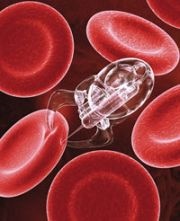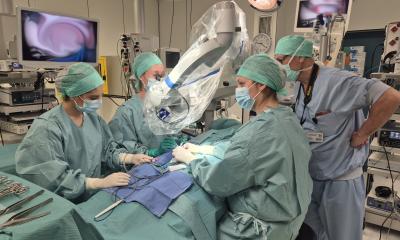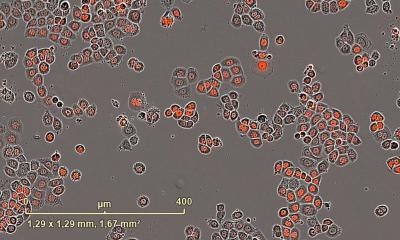A More Direct Delivery of Cancer Drugs to Tumors
An interdisciplinary team of researchers at Brigham and Women's Hospital (BWH) and the Harvard-MIT Division of Health Sciences and Technology has demonstrated a better way to deliver cancer drugs directly to tumors by using specially engineered nanoparticles that can inhibit a signaling pathway and deliver a higher concentration of medication to the specific area.

The team constructed the nanoparticles from a biodegradable, biocompatable, Food and Drug Administration-approved polymer which they chemically engineered to deliver a MAPK inhibitor. By inhibiting the MAPK signaling pathway, which is involved in a majority of human tumors, the nanoparticles hinder the multiplication of cancerous cells and predispose those cells to the cytotoxic effects of chemotherapeutic drugs. The team also modified the polymer to increase drug loading 20 fold, which overcomes a current drawback in nanomedicine, low efficiency of drug loading.
"Current chemotherapeutic drugs must be administered in high concentration throughout the body in order to destroy tumor cells, translating to high toxicity and discomfort for the patient, mainly due to the effects on normal cells," said Rania Harfouche, one lead author of the study, and fellow in the Health Sciences and Technology (HST) Division at BWH. These newly engineered nanoparticles would, however, selectively target the tumor cells and predispose them to chemotherapeutic drugs. "This will allow for lower drug concentration to be used, and provide opportunity for more potent treatments with lesser side-effects for the patient."
The combination of nanoparticles and the cancer drug cisplatin proved successful in preventing the growth of cancerous skin and lung cells and also induced cell death. When researchers gave the same combination to mice with melanoma, it inhibited tumor growth and enhanced the efficacy of the cancer drug. The entire tumors regressed in fifty percent of mice, compared with none in the group receiving cisplatin and the inhibitor without nanoparticles.
In previous work, the group demonstrated that a combination of two drugs delivered with a nanoparticle could exert superior anti-cancer effects. However, most cancers converge into a few pathways for survival and uncontrolled division. “We thought a better strategy might be to target these pathways using nanoparticles, almost like shutting the escape route before exposing the cancer to the drugs,” said lead author Sudipta Basu, fellow in the HST Division at BWH.
“The nanoparticles target pathways involved in multiple cancer types and can be applied to a diverse set of cancers, including hard-to-treat cancers, such as breast, pancreatic and liver cancer,” noted senior study author Shiladitya Sengupta, PhD, of the Department of Medicine at BWH. “The potential to add homing beacons on the surface of the nanoparticles can increase the efficiency of selectively targeting specific tumors and abolish off target side-effects”.
The team also included BWH research fellows Dr. Shivani Soni, Dr. Geetanjali Chimote, and Dr. Raghunath Mashelkar, a polymer chemist and visiting professor at HST from the National Chemical Laboratories in India. This research was funded by grants from the Coulter Foundation, the Mary Kay Ash Charitable Foundation and the Department of Defense BCRP.
27.04.2009






